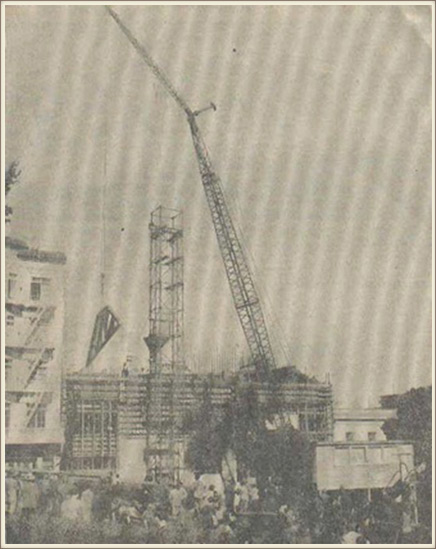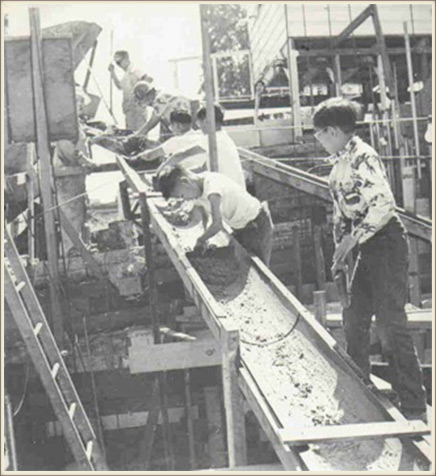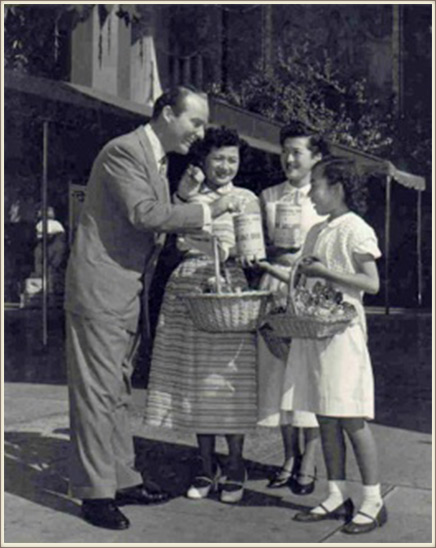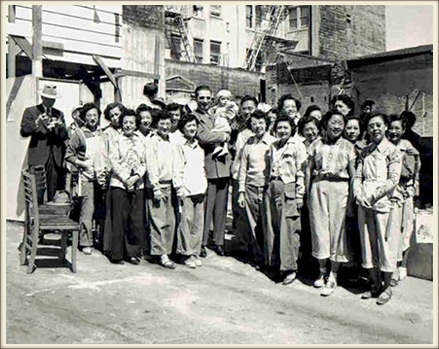History
Our Church’s Story
A historical landmark in San Francisco's Chinatown, the Buddha's Universal Church is the largest Buddhist church in the United States and home to the largest congregation in the City. Dedicated in 1963, the Church was made of concrete, steel, marble and wood and then filled with images of the Buddha formed in gold leaf and mosaic tiles. An altar resembling the ship of the Dharma - or the teachings of the Buddha - is flanked by teak paneled walls representing the ship's sails. Our bamboo chapel and rooftop garden and terrace can be found on the upper levels. Below is a modern kitchen with industrial appliances, a recording studio and a mirrored room for dance and choir rehearsals. Ours is a modern church practicing ancient teachings.
Once an old nightclub building, this spectacular five-story building has become a symbol of religious freedom and devotion. After buying the building in November of 1951 with the help of a bank loan, the members of the Church were told by a building inspector that the badly damaged building was beyond the repair of a $500 remodeling job. The building had been hastily constructed immediately after the 1906 earthquake that ravaged San Francisco, and with only one solid wall holding up the building, it needed to be demolished and completely rebuilt for general assembly purposes. With only $10,000 left in the bank, the Church simply did not have enough. And so, the members of the Church began the monumental feat of building the Church themselves.


In early 1952, the congregation made up of 300 people decided that the Church must be rebuilt and started to tear down the building brick by brick. Funds were short but manpower was strong. To support the cause, members contributed 10 to 20 percent of their monthly incomes and pledged 30 to 80 hours of labor for as long as it took to complete the project.
As members and friends of the Church assembled to begin the demolition, a letter arrived from the bank stating that their $30,000 loan was being recalled; the bank explained that "the collateral upon which we had made the loan is rapidly disappearing . . . we regret to inform you we must recall the loan immediately." Because the mortgage had to be repaid immediately, the future of the Church that spring was not bright: it was $20,000 in debt; it lacked building materials; its workers were untrained volunteers; and its sole possession was a muddy sinkhole on Washington Street.
From Cookies to Concrete
Raising money to repay the bank loan and to buy building materials became the main goal of the Church. In order to continue the rebuilding process, members contributed what they could from their own savings, and some even procured personal loans from other banks. Every evening and every weekend the building site was taken over by members and friends of the Church to keep the construction moving. When they faced shortages of funds, the building stopped and they took to the street - the congregation baked, wrapped and sold cookies on street corners to buy enough materials to keep the project rolling.
In 1958, the Church held a bazaar inside its unfinished building to celebrate the Chinese New Year and raise more funds. Thirty booths, featuring games, prizes and food, were set up, with the proceeds going directly into the Church's treasury. The work continued and what started out as a dilapidated concrete building was slowly being transformed into a church. After 11 years and four months of steady labor, the "church builders" had erected the only Buddhist church ever to have been built voluntarily by members of different ethnicity's and faiths.

Celebrating the Builders and the Bakers

The dedication of hundreds of people throughout the Bay Area to rebuild the Church is a remarkable story. Generous friends of the Church spent countless hours working next to members of the congregation, offering their diverse skills and expertise. The Church that stands is a testament to the American spirit of cooperation and goodwill.